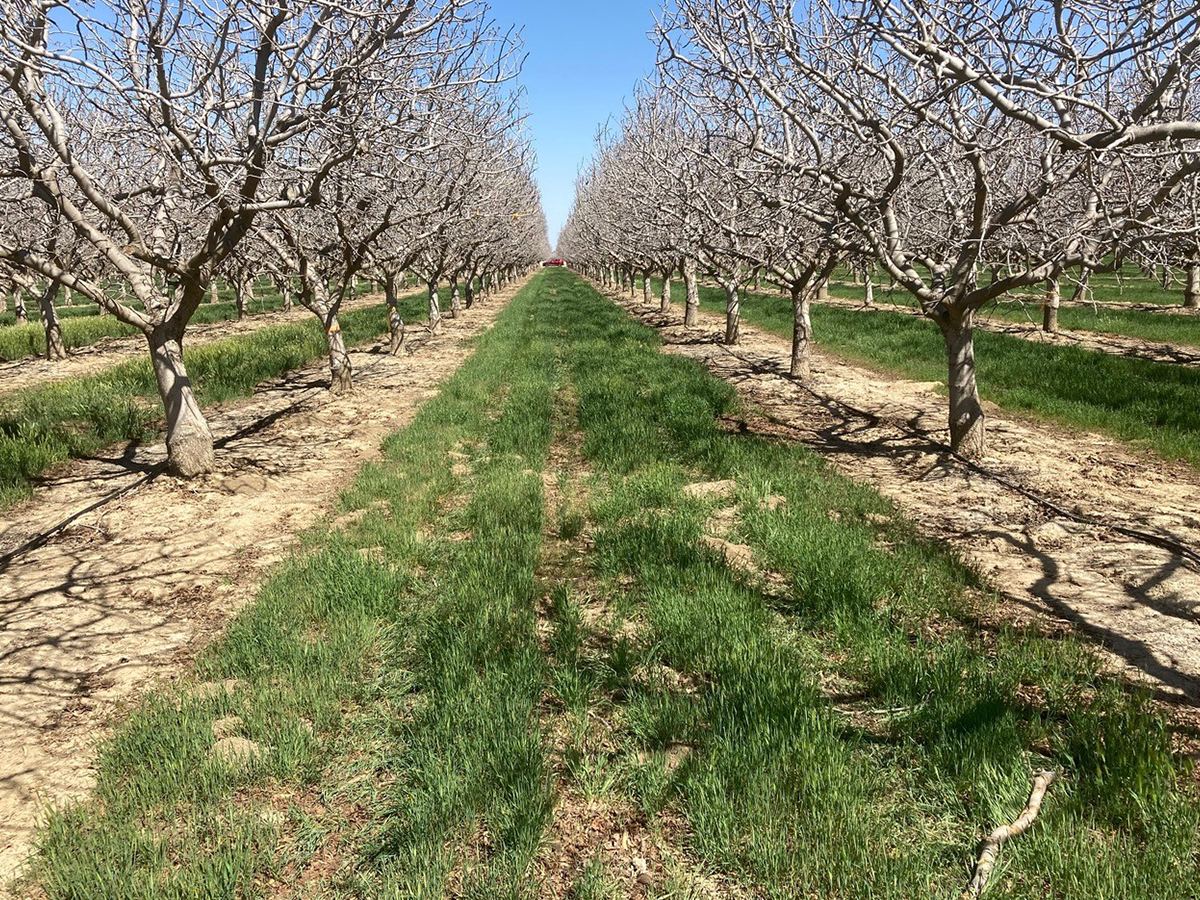
There is evidence that winter cover crops planted in pistachio orchards provide more benefits than problems, UCCE Agricultural Water Management Specialist Daniele Zaccaria and UCCE Researcher Houston Wilson said. In a California Pistachio Research Board funded study, they are setting out to document those benefits.
In this year’s trial (2021) at the UC Kearney site, both a medium-tall vegetation mix and a short vegetation mix will be planted and monitored for determining the actual consumptive water use during the establishment phase and until April. The study will also investigate how the cover crop residues left in tree inter-rows from May to September will affect the relative fractions of available soil moisture and applied water that goes to soil evaporation and tree transpiration during the pistachio growth season.
Adoption of cover crops in pistachio production has been slow due to perceptions of increased water use, conflicts with pruning operations and difficulty with sanitation practices to control navel orangeworm. Zaccaria said this year’s research project aims to prove the benefits, including enhanced pistachio nut yield and water productivity.
Water limitations in drought conditions are an obvious roadblock to winter cover cropping, but Zaccaria said this year’s trial could show that establishment and growth of a winter cover crop on the orchard floor enhances water infiltration and soil water storage from little rains during winter and early spring as well as water productivity in several ways.
Winter cover crops in orchards are normally planted in the fall, after harvest and prior to conducting an early season irrigation to refill the soil profile prior to budbreak. That water, when available, helps to germinate the seeds. As the cover crop grows, Zaccaria said, it reduces the evaporation of soil moisture. The combination of soil moisture and better aeration conditions boosts root health and functionality to uptake water and nutrients.
“There is a combination of factors working here. As soil aeration and oxygen content improves, the roots take up more water for transpiration and carbohydrate production, there is less water loss due to soil evaporation, which results in increasing water productivity (more crop per drop),” he said.
Pistachio growers have also expressed some concerns that cover crops may create some impediments to timely pruning and orchard sanitation. Wilson said during this year’s trial, they would be looking at the microclimate in the orchard made by the winter cover crop and its effect on NOW mortality. He cited earlier research that showed there is a higher mortality of NOW on bare ground than where winter cover crops are grown.
Pistachio grower James Nichols, who is a cooperator in on-going cover crop research, said there are tradeoffs with cover crops in mature orchards. If an established cover crop will impede pruning, it can be mowed. After pruning and shredding, he said it regrows. He has also seen a difference in tree productivity due to light reflected from the dried residue of the cover crop to the tree canopy. Light can be a limiting factor to yields, he said, and he observed more crop in the lower part of the tree canopy compared to orchards without the dried cover crop residue reflecting light.











